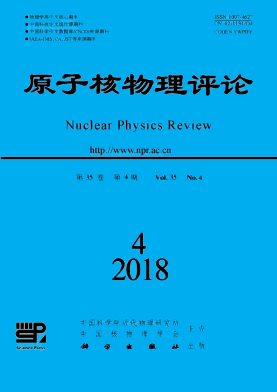|
[1]
|
HOROI M, BROWN B A, ZELEVINSKY V. Phys Rev C, 1994, 50:2274. |
|
[2]
|
KOONIN S E, DEAN D J, LANGANKE K. Phys Rep, 1997, 278:1. |
|
[3]
|
OTSUKA T, HONMA M, MIZUSAKI T, et al. Prog Part Nucl Phys, 200147:319. |
|
[4]
|
SCHMID K W. Prog Part Nucl Phys, 2004, 52:565. |
|
[5]
|
HU Qingli, GAO Zaochun, CHEN Yongshou. Phys Lett B, 2014, 734:162. |
|
[6]
|
DELAROCHE J P. Phys Rev C, 2010, 81:014303. |
|
[7]
|
MAQBOOL I, SHEIKH J A, GANAI P A, et al. J Phys G, 2011, 38:045101. |
|
[8]
|
RODRÍGUEZ-GUZMÁN R, ALHASSID Y, BERTSCH G F. Phys Rev C, 2008, 77:064308. |
|
[9]
|
ROBLEDO L M, BERTSCH G F. Phys Rev C, 2011, 84:014312. |
|
[10]
|
GAO Zaochun, HOROI M, CHEN Y S. Phys Rev C, 2015, 92:064310. |
|
[11]
|
RING P, SCHUCK P. The Nuclear Many-Body Problem[M]. New York:Springer Verlag, 1980. |
|
[12]
|
BROWN B A, RICHTER W A. Phys Rev C, 2006, 74:034315. |
|
[13]
|
SUN Y. Phys Scr, 2016, 91:043005. |
|
[14]
|
HAYASHI A, HARA K, RING P. Phys Rev Lett, 1984, 53:337. |
|
[15]
|
ENAMI K I. Prog Theor Phys (Kyoto), 2000, 104:757. |
|
[16]
|
TU Ya, HE Yan, Gao Zaochun, et al. Phys Rev C, 2017, 95:064307. |
|
[17]
|
NORCEDAL J, WRIGHT S J. Numerical Optimization[M]. New York:Springer Verlag, 2006. |
|
[18]
|
SCHMID K W, ZHENG R R, GRÜMMER F, et al. Nucl Phys A, 1989, 499:63. |
|
[19]
|
WANG Jiaqi, GAO Zaochun, Ma Yingjun, et al. Phys Rev C, 2018, 98:021301(R). |
|
[20]
|
HORN R A, JOHNSON C R. Matrices Analysis[M]. Cambridge:Cambridge Univeristy Press, 2013. |
|
[21]
|
GLOECKNER D H, LAWSON R D. Phys Lett B, 1974, 53:313. |
|
[22]
|
MILLNER D J, KURATH D. Nucl Phys A, 1975, 255:315. |
|
[23]
|
JIMÉNEZ-HOYOS C A, RODRÍGUEZ-GUZMÁN R, SCUSERIA G E. J Chem Phys, 2013, 139:224110. |






 甘公网安备 62010202000723号
甘公网安备 62010202000723号 DownLoad:
DownLoad: